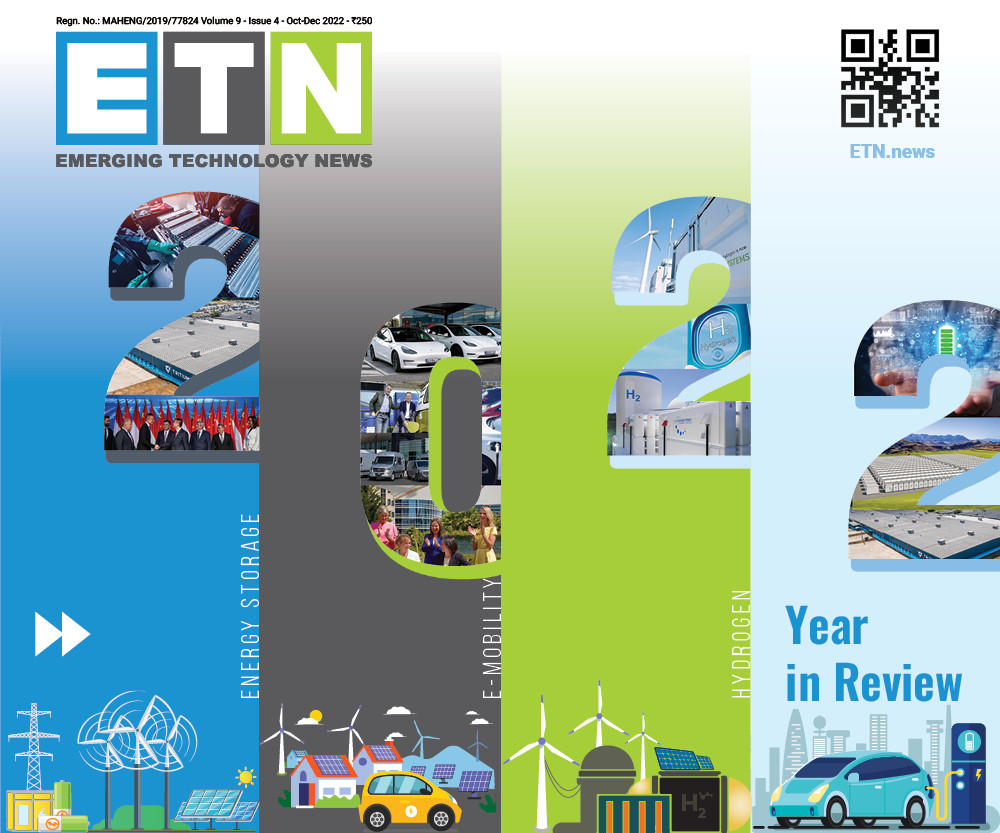Team ETN has compiled a brief review of the global energy storage sector from various reports released in 2022, and recapped snapshots of news about important turn of events.
For 2022 Review of other sectors, click here.
Energy storage installations around the world are projected to reach a cumulative 411 GW (1,194 GWh) by the end of 2030, states the latest research report by BloombergNEF. That is 15 times the 27GW/56GWh of storage that was online at the beginning of 2022. It is estimated that 387GW/1,143GWh of new energy storage capacity will be added globally from 2022 to 2030.
The market report projects an additional 13 percent of capacity by 2030, mainly driven by policy announcements, of which the most notable is the US Inflation Reduction Act – with a provision of more than $369 billion in funding for clean technologies; and the European Union's REPowerEU plan – with targets that intend to reduce reliance on Russia for fuel.
The US and China are set to remain the two largest markets with over half of the global storage installations, while Europe - still recovering from the current energy crisis - has some catching up to do.
The U.S. energy storage market set a record in the first quarter of 2022, with grid-scale installations totaling 2,399 MWh, according to Wood Mackenzie and the American Clean Power Association's (ACP) latest US Energy Storage Monitor report. The country's cumulative utility-scale battery storage deployments totaled 6,471MW of power and 16,792MWh of energy capacity. The US BESS market is estimated at $1.3 billion in 2022, and currently holds a 27.61 percent share of the global market.
In February 2022, the US Department of Energy (DOE) issued two notices of intent to provide funding to boost the production of the advanced batteries. This includes investing in battery materials refining and production plants, battery cell and pack manufacturing facilities, and recycling facilities.
The Europe energy storage market is expected to grow at a CAGR of approximately 16.3 percent in the period 2022 to 2027, reaching 5.2GW of installed capacity. However, shortage in procurement of battery minerals is restricting the growth of the European energy storage market, and might result in fewer installations into 2023 and 2024.
RELATED: Europe gears for a competitive battery value chain
Regulation on energy storage is still under development in most European countries. As per the European ES market report by EASE and Delta-EE, front-of-meter batteries dominate both existing and new installations with limited capacity across both the residential and commercial / industrial sectors, with the exception of Germany and Italy. While Germany holds the largest residential market with ~200,000 annual installations, Italy is also experiencing rapid growth due to government capex subsidies.
Asia-Pacific (APAC) region leads the global battery energy storage market, accounting for 68 percent of total market value through 2026. Leading the way are countries like China, Japan, India, South Korea, and Australia.
Giga factories
The global EV battery market is projected to grow at a CAGR of 19.0 percent from $56.4 billion in 2022 to $134.6 billion by 2027, driven by battery technology advancement, favorable policies and regulations, and introduction of new plug-in EV models.
EV demand saw a steady growth this year, compared with the pandemic and post-pandemic years. This has spurred the automakers and their suppliers to scale-up battery production to meet the growing demand. Report by Benchmark Mineral Intelligence states that currently there are over 300 battery giga factories in the construction or planning stages around the world. This represents ~6,388 GWh worth of battery capacity, and an encouraging 68 percent increase compared with the figure last year.
The market is dominantly led by Asian suppliers, despite efforts by the US and Europe to increase the domestic production of batteries. US has 11 more giga factories in the making this year, and Europe has added eight more factories.
Chinese companies make up 56 percent of the EV battery market, followed by Korean and Japanese manufacturers. In the first half of this year, global EV battery sales reached ~$42.8 billion - of which Korean companies LG New Energy, SK On, and Samsung SDI accounted for 26 percent of sales.
China remains on top of the industry, and by 2030 it is expected to have 226 battery plants in operation, representing ~4,500 GWh of annual production, or 70 percent of the global capacity. Leading battery supplier, CATL's market share rose from 32 percent in 2021 to 34 percent in 2022. The company accounts for 1/3rd of the world's EV batteries.
The encouraging growth of this segment has also seen several JVs between automakers and battery companies this year; 14 of the 23 North American giga factories being currently planned are wholly or jointly owned by automakers.
GM is investing over $7 billion in four manufacturing plants in Michigan. Ford has put up $11.4 billion to build three battery plants in Tennessee and Kentucky, and working on another one in Turkey. Stellantis has partnered with LG to build a cell factory in Ontario.
RELATED: E-Mobility | Review 2022: A look at the year that was 